Indian folk art, a rich tapestry of traditions, is a reflection of the nation’s rural heartland. It includes vibrant paintings, textiles, soulful music, and captivating dances, each region with its unique art forms. Examples include Madhubani paintings in Bihar, Pithora paintings in Gujarat, and Kalamkari paintings in Andhra Pradesh. Indian weavers showcase their skills in intricate embroidery in Kashmir, Kantha embroidery in Bengal, and Patola sarees in Gujarat. Folk music and dance forms, such as Rajasthan’s soulful folk songs, Punjab’s Bhangra, and Kerala’s Kathakali, also play a significant role in social and religious ceremonies.
Folk Art in Modern Times:
Commercialization and Globalization of Folk Art: Balancing Economic Growth with Cultural Preservation in Today’s Market
The commercialization of folk art, while providing economic benefits, can compromise its authenticity and traditional techniques. To ensure the preservation of folk art, efforts must balance cultural preservation with market demands.
Folk Art’s Influence in Contemporary Design: Integrating Traditional Motifs into Modern Products
Designers combine folk art with modern aesthetics, creating unique products honouring tradition and preserving cultural heritage through elements like Indian block prints and African patterns.
Preserving Folk Art Heritage: Initiatives by Governments, NGOs, and Artists to Safeguard Tradition
Government programs, NGOs, and artist groups are preserving folk art through funding, training, and opportunities for artisans, promoting traditional techniques, raising public awareness, and ensuring its appreciation and passing down.
Folk Art and Social Issues:
Empowering Artisans
Folk art empowers marginalized communities, especially women, by providing economic opportunities and social recognition. Training programs help women gain skills, achieve financial independence, and preserve cultural traditions.
Cultural Identity and Nationalism
Folk art shapes cultural identity and fosters national pride. It reflects local customs and values, helping communities preserve their heritage. Promoting these arts unites people and highlights cultural diversity.
Environmental Sustainability
Folk art traditions often use sustainable practices and materials. Artisans rely on natural dyes and local resources, promoting eco-friendly methods. Supporting folk art preserves culture and encourages environmental responsibility.
Folk Art in Everyday Life:
Decorative Elements
Folk art motifs enrich home decor, textiles, and everyday objects with cultural vibrancy. Traditional designs enhance items like rugs, wall hangings, and clothing, connecting people to their heritage while celebrating craftsmanship.
Festivals and Celebrations
Folk art is central to festivals like Diwali, Holi, and Navratri, enhancing the celebratory atmosphere. Artisans create rangoli, decorations, and ceremonial items that reflect cultural significance, fostering community bonds during these important events.
Community Engagement
Folk art promotes community engagement and social cohesion through collective creation. Workshops and local fairs encourage participation and appreciation, strengthening relationships and ensuring traditions endure while fostering a shared cultural identity.
The Silent Symphony of Vanishing Traditions!
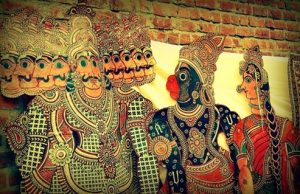
Andhra Pradesh: Tholu Bommalata
Tholu Bommalata is an Andhra Pradesh-based shadow puppetry art form that uses intricately crafted leather puppets to tell stories from Hindu mythology. These movable puppets, with vibrant colors and detailed designs, are accompanied by rhythmic music and energetic storytelling. However, as modern entertainment replaces this ancient art form, dedicated artists are working to preserve this heritage, as people increasingly turn to modern entertainment.
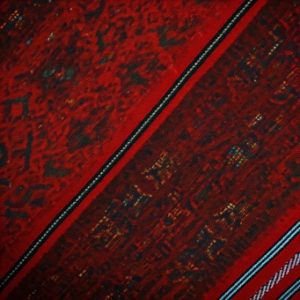
Arunachal Pradesh: Traditional Weaving
Arunachal Pradesh’s traditional weaving is a beautiful art form. Women of various tribes, like Adi, Apatani, and Mishmi, weave intricate patterns on fabrics made from natural fibers. These textiles, with their geometric patterns and vibrant colors, tell stories of the tribes’ heritage. However, with modern influences, this traditional skill is facing challenges.
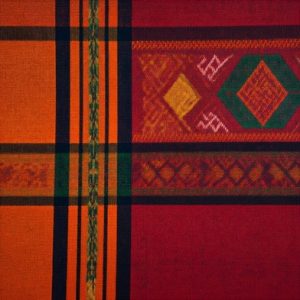
Assam: Traditional Weaving
The Mishing tribe in Assam, known for their intricate patterns and vibrant colors, is a fading art form. Traditionally, women woven beautiful textiles for clothing, blankets, and ceremonial garments using a unique backstrap loom technique. The threads were often dyed with natural colors from plants and minerals, and the designs were symbolic and deeply culturally significant, often inspired by nature, mythology, and religious beliefs.
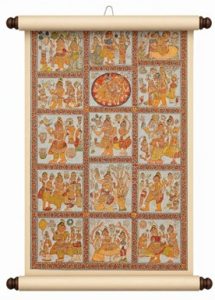
Bihar: PataChitra
Patachitra, a traditional folk art form in Bihar, features bright colors, simple lines, and a distinctive style. It depicts mythological tales, religious events, and historical narratives on cloth scrolls. Artists travel to villages to showcase their work, narrating stories to villagers, serving as a powerful medium for education and entertainment.
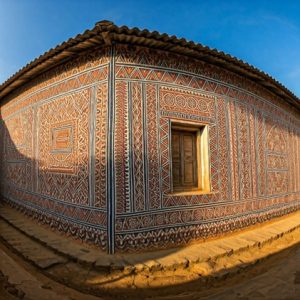
Chhattisgarh: Pithora Paintings
Pithora Painting is a traditional art form in Chhattisgarh, India, featuring intricate designs on houses’ walls and floors, often depicting mythological tales and symbols. Artists, often from tribal communities, use natural pigments from plants and minerals. These paintings are believed to bring good luck and ward off evil spirits, but due to urbanization and modern art influences, the practice is declining.
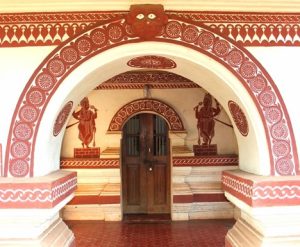
Goa: Kaavi Art
Kaavi art, an ancient Goan art form, involves creating intricate murals on temple walls using a technique of scratching the surface to reveal contrasting colors. These murals often depict mythological stories, religious figures, and geometric patterns. Despite its beauty, the number of skilled artists is decreasing, as fewer people are learning this traditional art form.
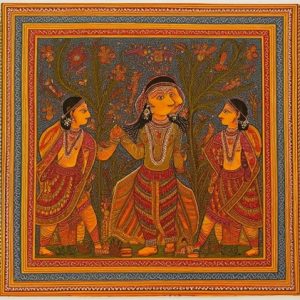
Gujarat: Padhar painting
Padhar painting, a vibrant art form of the Rabari community in Gujarat, features intricate patterns and vivid colors. Typically created by skilled women, these paintings depict scenes from nature, mythology, and daily life. They serve functional purposes, adorning clothing, bed covers, and wall hangings, showcasing the Rabari people’s rich cultural heritage.
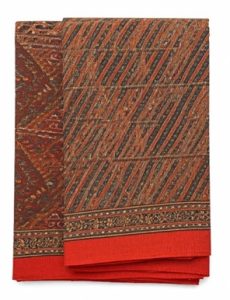
Hariyana: Bagh
Bagh textiles, a traditional Haryana folk art, create intricate geometric patterns on fabric using natural dyes. These unique designs and earthy colors are known for their unique designs. However, with the increasing popularity of machine-made textiles and changing fashion trends, the demand for hand-made Bagh textiles is on the rise.
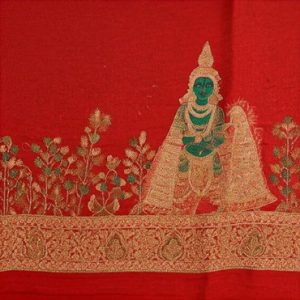
Himachal Pradesh: Chamba Rumal
Chamba Rumals, a lesser-known folk art from Himachal Pradesh, is an intricate embroidery technique involving intricate designs on fine muslin cloth. Traditionally used as handkerchiefs, they have evolved into prized collectibles. However, with changing fashion trends and machine-made textiles, the demand for handmade Chamba Rumals is decreasing.
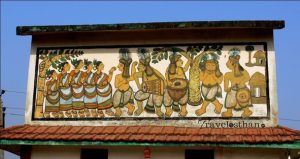
Jharkhand: Paitkar painting
Paitkar painting, a traditional folk art from Jharkhand, India, involves creating long scrolls depicting mythological stories and local legends. Known for its vibrant colors and simple lines, Paitkar painters traveled to villages to narrate stories, serving as a powerful tool for education and entertainment. However, modern forms of entertainment have diminished interest in Paitkar painting.
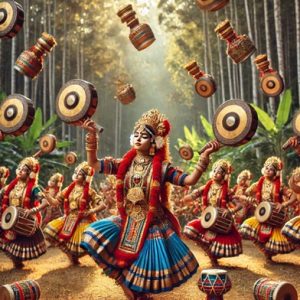
Karnataka: Kamsale
Kamsale is a unique folk art that blends music, dance, and devotion, associated with Male Mahadeshwara, a folk deity. The performers use cymbals and rhythmic beats to create a trance-like effect. However, this performance art, which once brought communities together, is fading due to the limited number of practitioners and the shift toward urban lifestyles.
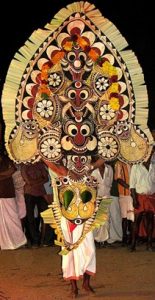
Kerela: Padayani
Padayani, a mesmerizing blend of music, dance, and theater, is a captivating ritualistic dance-drama from Kerala, India. Performed in temples dedicated to goddess Bhadrakali, it is believed to ward off evil spirits and seek blessings from the goddess. Despite its rich heritage and artistic traditions, Padayani’s decline is attributed to changing lifestyles and lack of interest among younger generations.
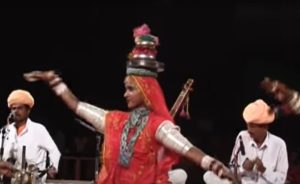
Madhya Pradesh: Tertali
The Tertali, a folk dance performed by the Kamar tribe of Madhya Pradesh, is a captivating spectacle that showcases the Kamar tribe’s cultural heritage and skill. The dance involves a small group of women balancing metal cymbals, a sword, and an ornamental pot on their heads, synchronized with rhythmic drumming and singing. This unique dance is a testament to the Kamar tribe’s grace and skill.
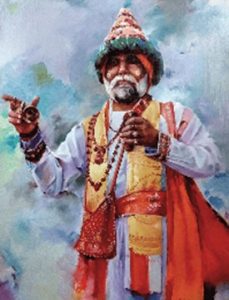
Maharashtra: Vasudeo
The ‘Vasudeos’, a community of Krishna devotees from Dwarka, Gujarat, are known for their soulful devotional songs in Maharashtra. These wandering minstrels, dressed in distinctive attire, survive on alms while singing and playing cymbals. They symbolize a rich cultural tradition that is fading away due to changing times and economic pressures, urging us to preserve this heritage.
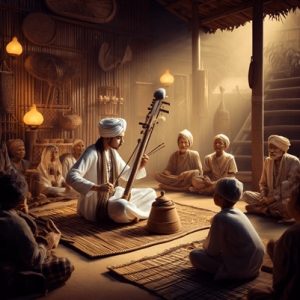
Manipur: Pena
Pena, a traditional folk form from Manipur, is fading due to the rise of modern entertainment and the decline of skilled pena-singjas. Pena, a bowed lute, was central to Manipur’s cultural identity and was used in rituals, storytelling, and martial arts events. Players, known as pena-singjas, shared tales of gods, warriors, and legends of Manipuri culture. As a result, this art form is at risk of vanishing.
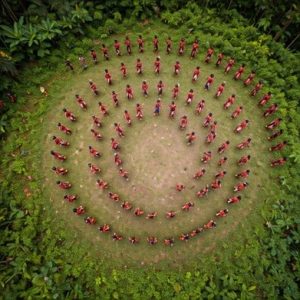
Meghalaya: Laho
Laho, a vibrant and energetic dance of the Pnar tribe, is a vibrant form of Meghalayan folk music. Known for its colorful performances, it is often performed at weddings, funerals, and special occasions. Despite its popularity declining among younger generations, Laho dance features intricate patterns and traditional music played on drums and flutes.
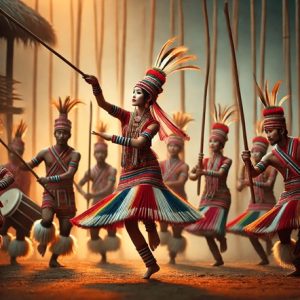
Mizoram: Cheraw
Cheraw dance, a vibrant bamboo dance performed by Mizo people, requires skill and coordination. Despite modern entertainment options and changing social dynamics, younger generations may not practice this traditional dance form. Cultural organizations and the government organize festivals and workshops to preserve and promote Cheraw.
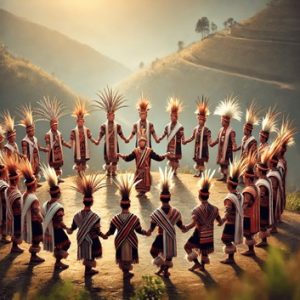
Nagaland: Melo pitha
One folk form of Nagaland that is facing a decline in popularity is the Melo Phita dance. This traditional dance of the Angami Naga tribe is performed during the Sekrenyi festival, a significant cultural event for purification and renewal. The Melo Phita dance involves intricate hand movements and rhythmic steps, accompanied by traditional music.
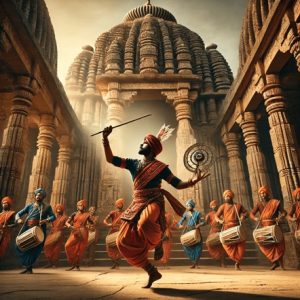
Odisha: Danda Nata
The Danda Nata dance is traditionally performed during festivals and celebrations. This energetic and physically demanding dance form, originating from the Ganjam district, involves dancers wielding wooden sticks in rhythmic patterns, but with changing times and the allure of modern entertainment, the younger generation is less inclined to learn and practice this traditional art form.
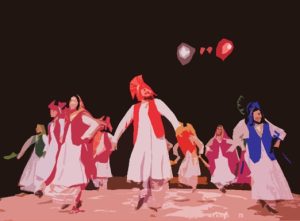
Punjab: Luddi dance
Luddi is a vigorous and energetic folk dance traditionally performed by men in Punjab. It is characterized by its fast-paced movements, rhythmic clapping, and the use of colorful turbans and attire. However, with the rise of modern entertainment and changing social dynamics this traditional dance form.
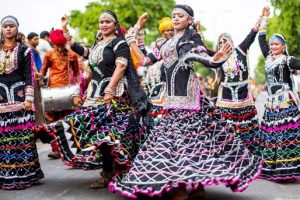
Rajasthan: Kalbelia
The Kalbelia dance, a traditional Rajasthani dance originating from the Kalbelia community, is experiencing a decline in popularity due to less interest from younger generations and other mundane entertainment options. The dance, characterized by fluid movements, colorful attire, and intricate footwork, involves dancers replicating snake movements and swaying their bodies and skirts to traditional instruments like the dholak and pungi.
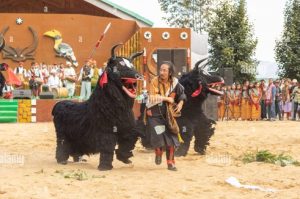
Sikkim: Yak Dance
The Yak Dance is a vibrant and energetic dance form, often performed during festivals and celebrations. It involves dancers dressed in colourful costumes, mimicking the movements of a yak. The dance is accompanied by traditional music, including drums and cymbals. However, with the changing times and the increasing influence of modern entertainment, the younger generation is less inclined to learn and practice this traditional dance form.
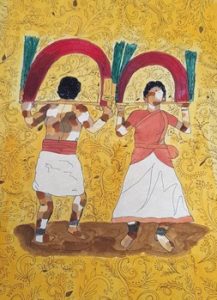
Tamil Nadu: Kavadi Attam
The Thaipusam festival in Tamil Nadu is a significant event where the Kavadi Attam, a devotional dance form, is performed to honor Lord Murugan. Devotees carry ornate kavadis, ornate structures, and chant prayers. However, the popularity of this spiritual practice has declined due to factors like urbanization, changing lifestyles, and the rise of other entertainment forms.
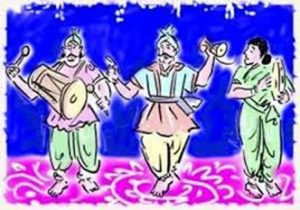
Telangana: Oggu Katha
Oggu Katha a traditional art form involves storytelling through intricate paintings on cloth, accompanied by rhythmic narration and music. Artists, predominantly from the Golla-Kuruma community, use vibrant colours and intricate designs to depict mythological stories, historical events, and social issues. With the changing times and the advent of modern entertainment, the younger generation is less inclined to learn and practice this art form.
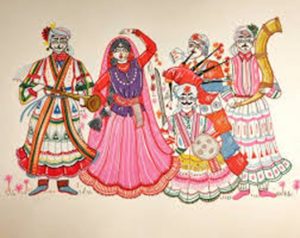
Uttarakhand: Chholiya Dance
The Chholiya dance, an ancient martial art from Kumaon, Uttarakhand, is gaining popularity due to its intricate patterns of swords and shields, traditionally performed during weddings and auspicious occasions. Despite its popularity, the dance showcases agility, strength, and coordination, creating a vibrant atmosphere.
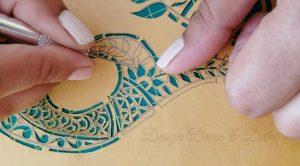
Uttar Pradesh: Saanjhi Art
Saanjhi art, a traditional Indian paper-cutting technique from the Braj region of Uttar Pradesh, is closely linked to the Hindu Holi festival and the love story of Radha and Krishna. Artists meticulously cut intricate designs from handmade paper, often layered and pasted onto walls or floors. Despite its spiritual significance, Saanjhi art faces challenges due to declining interest among younger generations and its time-consuming nature.
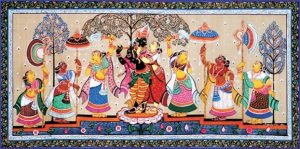
West Bengal: Patchitra
Patachitra, a West Bengali traditional art form, is fading due to the rise of digital art and changing cultural preferences. This intricate scroll painting style, showcasing mythological stories, is created using natural pigments and handmade paper. The process involves meticulous brushwork and a deep understanding of color theory.
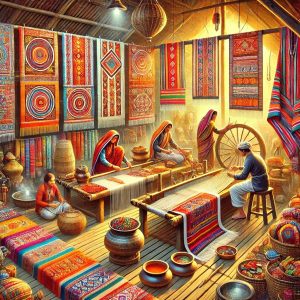
Tripura
Tripura, a northeastern Indian state, is known for its rich handloom and handicraft traditions. Indigenous communities have been weaving textiles like Risa (women’s dress) and Riha (shawl), and crafting cane, bamboo, wood, pottery, and metalwork for centuries. Despite their cultural significance, these traditions face challenges such as competition from mass-produced goods and an aging artisan population. To preserve this heritage, government initiatives, NGOs, and skill development programs are working to empower artisans and promote their craft, ensuring the continuity of these unique arts.
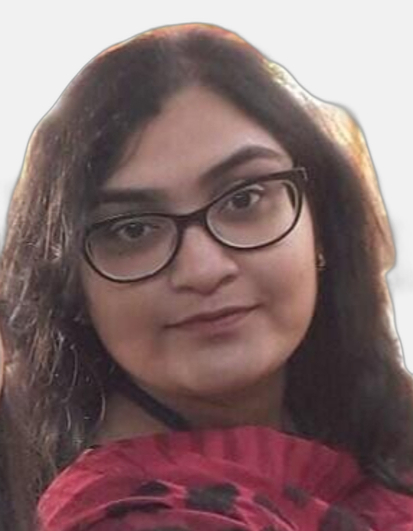









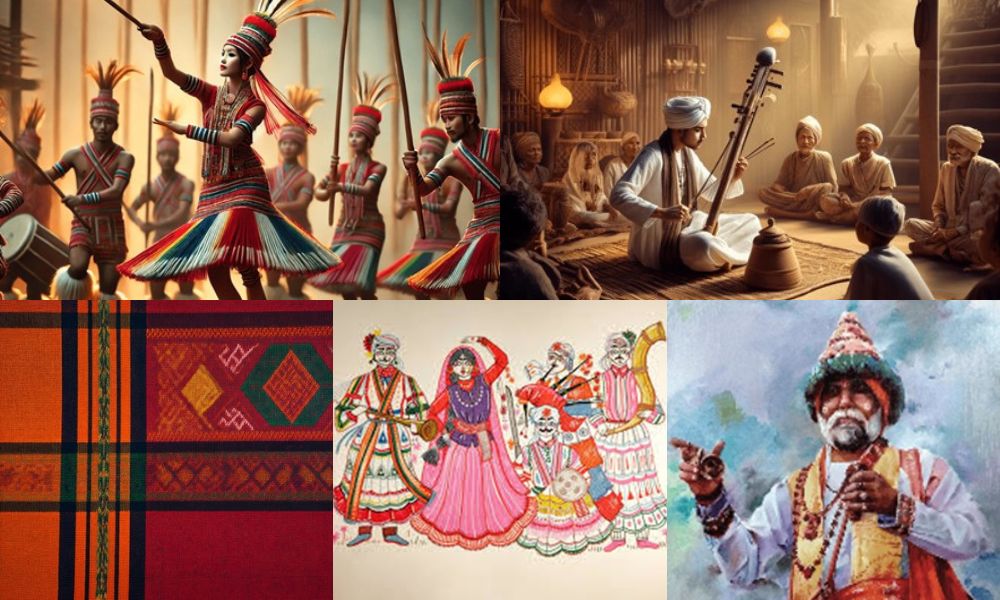



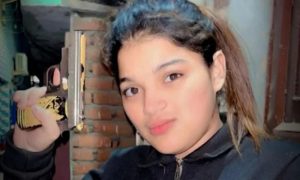
More Stories
How ignoring mental health conditions can ruin our lives and the lives of those we love?!
“Exploring the Connection Between Walk and Cognitive Enhancement”
“23rd VNM Garba Queen, embracing diversity.”